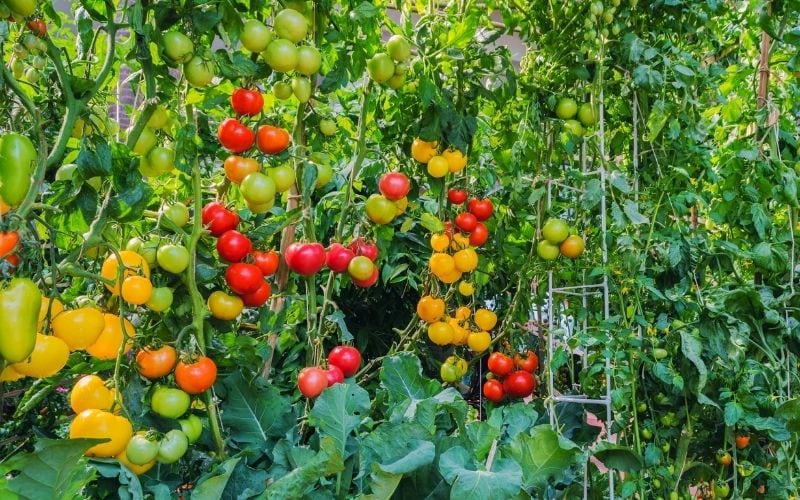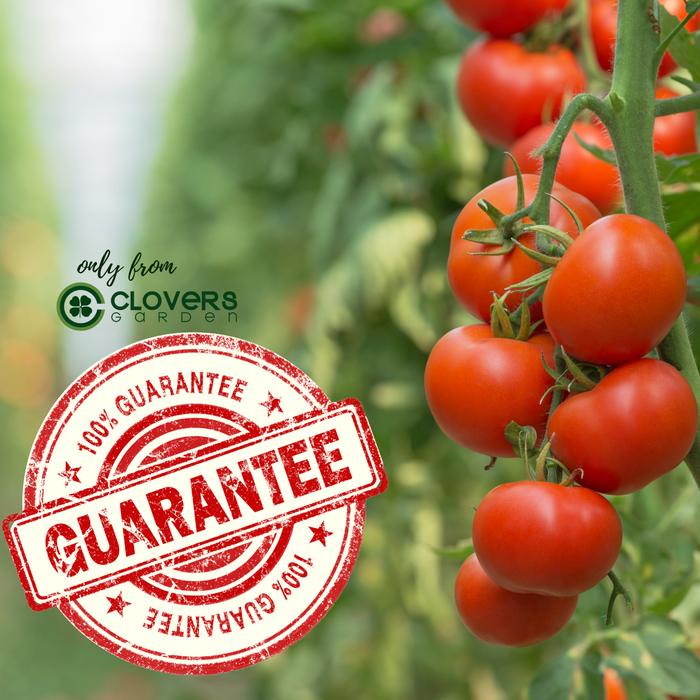Big beef tomato growing
HTML Markup
From my experience, there's nothing quite like the satisfaction of growing your own food, and when it comes to garden giants, the Big Beef tomato stands in a league of its own. I do believe that with the right knowledge and a bit of patience, anyone can cultivate these magnificent, juicy orbs that are perfect for everything from sandwiches to salads. I recommend that every gardener, whether a novice or a seasoned veteran, considers adding this incredible variety to their plot. Its disease resistance, prolific yield, and superior flavor make it a true champion of the garden. The information I'm about to share comes from years of handson experience and a deep passion for horticulture.
Why Choose Big Beef Tomatoes? The Indeterminate Advantage
We often get asked why we recommend Big Beef tomatoes so highly. The answer lies in their genetic makeup and growth habit. As an indeterminate variety, these plants will continue to grow, flower, and produce fruit until the first frost. This is a significant advantage over determinate varieties, which produce their entire crop all at once. For the home gardener, this means a steady supply of fresh tomatoes throughout the entire growing season, not just a single, overwhelming harvest. From my experience, a single healthy Big Beef plant can easily provide a family with more than enough tomatoes for fresh eating and preserving. The constant production also allows for better management of pests and diseases, as you can monitor and treat problems on an ongoing basis rather than dealing with a sudden, widespread issue on a fully laden plant. The sheer productivity is astounding; I have seen a single plant produce dozens of pounds of fruit in a single season. The fruit itself is a perfect globe shape, with a rich red color and a classic tomato flavor that is both sweet and tangy. The texture is firm and meaty, with very few seeds, making it ideal for slicing. I do believe this is the quintessential beefsteak tomato.
Preparing Your Soil: The Foundation of Success
I recommend beginning with the soil. The foundation of any successful tomato crop is rich, welldraining soil. We aim for a loamy mixture, high in organic matter. You can achieve this by incorporating wellrotted compost, aged manure, or other organic materials into your garden bed. A soil pH between 6.0 and 6.8 is ideal for optimal nutrient uptake. We recommend a simple soil test to determine your current pH and nutrient levels. This is a crucial step that many gardeners skip, but from my experience, it can be the difference between a mediocre harvest and a magnificent one. Properly prepared soil provides the necessary nutrients and structure for strong root development, which is the key to a healthy, productive plant. We also advocate for raised beds, as they allow for better control over soil composition and drainage, and they warm up faster in the spring. If you are planting in the ground, we recommend digging a hole twice as wide as your transplant's root ball and incorporating a generous amount of compost into the native soil. This creates a nutrientrich pocket that gives the young plant a powerful head start.
Starting Seeds Indoors: The Early Bird Gets the Tomato

We believe that starting your own seeds is one of the most rewarding aspects of gardening. For Big Beef tomatoes, we recommend starting them indoors approximately 68 weeks before your last expected frost date. This gives the seedlings enough time to develop a strong root system and sturdy stems before being transplanted outdoors. We use a sterile seedstarting mix to prevent dampingoff disease and ensure a clean slate for our young plants. Sow the seeds about 1/4 inch deep in trays or individual pots. Provide a consistent temperature of 7585°F for optimal germination, which we often achieve with a heat mat. Once the seedlings emerge, we recommend placing them under grow lights for 1416 hours per day. This prevents them from becoming leggy and weak. We also find that a gentle breeze from a small fan helps to strengthen the stems, mimicking outdoor conditions. As the seedlings grow, we encourage uppotting them into larger containers to accommodate their expanding root systems. This process, known as "potting up," is a simple yet effective way to ensure a robust plant ready for its permanent home in the garden. We consistently find that a wellgrown seedling is far more resilient to transplant shock and environmental stressors.
Transplanting Outdoors: Giving Your Plants the Best Start

When it comes to transplanting, we emphasize patience. Wait until all danger of frost has passed and the soil has warmed to at least 60°F. We recommend hardening off your seedlings before planting them outside. This involves gradually acclimating them to outdoor conditions over a period of 710 days. From our experience, this process is nonnegotiable for success. Start with a few hours in a shady, protected spot, and incrementally increase the time and sunlight exposure each day. When you're ready to plant, we recommend digging a deep hole and planting the seedling deeper than it was in its pot. We often remove the lower leaves and bury a portion of the stem. This is a key technique, as the buried stem will grow new roots, creating a stronger, more vigorous plant. We space our plants about 2436 inches apart to allow for proper air circulation and to give them room to grow. After planting, we water thoroughly to settle the soil and help the roots get established.
Essential Care: Nurturing Your Big Beef Plants
Caring for your Big Beef tomato plants is a continuous process that we find incredibly rewarding. Proper watering is one of the most critical factors. We recommend deep, infrequent watering rather than shallow, frequent watering. This encourages the roots to grow deeper, making the plant more resilient to drought. We always water at the base of the plant to keep the foliage dry, which helps prevent fungal diseases. We also recommend a generous layer of mulch around the base of the plants. Mulch helps to conserve moisture, suppress weeds, and regulate soil temperature. We prefer using straw, shredded leaves, or wood chips. Another vital aspect of care is fertilization. We recommend using a balanced fertilizer when the plants are young and then switching to a fertilizer with a higher phosphorus and potassium content once they begin to flower and set fruit. This supports fruit production and overall plant health. We apply fertilizer according to the package directions and often opt for slowrelease organic fertilizers to provide a steady supply of nutrients. We also believe that proper staking or caging is nonnegotiable for these large, heavyfruited plants. A strong support system prevents the plant from collapsing under the weight of its fruit, keeps the fruit off the ground, and improves air circulation.
Controlling Pests and Diseases: Proactive Protection

We know that a healthy plant is your best defense against pests and diseases, but we also recommend a proactive approach to garden management. We regularly inspect our plants for any signs of trouble. Common pests like aphids, tomato hornworms, and spider mites can be a nuisance. We recommend using organic controls like a strong spray of water to dislodge aphids, handpicking larger pests like hornworms, and using insecticidal soap as a last resort. For diseases, prevention is key. We find that proper spacing, good air circulation, and watering at the base of the plant can prevent many common fungal issues like blight. We also recommend rotating your crops each year to prevent the buildup of soilborne pathogens. If a disease does appear, we recommend prompt action, which may include removing and destroying affected leaves or plants to prevent it from spreading. From our experience, early detection and intervention are the most effective strategies for maintaining a healthy and productive garden.
Harvesting Your Bounty: The Sweet Taste of Success
The moment of harvest is the culmination of all your hard work. We believe that the best time to pick your Big Beef tomatoes is when they have fully developed their deep red color and feel firm but slightly soft to the touch. Do not wait for them to become mushy. They will continue to ripen on your counter, but from my experience, picking them at their peak of ripeness on the vine ensures the best flavor. We recommend a gentle twist of the fruit to snap it from the vine, or a sharp pair of clippers to avoid damaging the plant. We also find that harvesting regularly encourages the plant to produce more fruit. The satisfaction of slicing into a homegrown, sunripened Big Beef tomato is unparalleled. Its meaty texture and rich, complex flavor are a world apart from anything you can buy in a store. This is why we do what we do—for the unparalleled taste and the connection to the food we eat.
Storing and Preserving Your Harvest
We find that a bountiful harvest often leads to the question of storage. We recommend storing ripe tomatoes at room temperature, away from direct sunlight. Do not refrigerate them, as this will cause them to lose flavor and develop a mealy texture. If you have an abundance of tomatoes, we recommend preserving them. From my experience, Big Beef tomatoes are excellent for canning whole, making into sauces, or freezing for later use. We have perfected a simple roasted tomato sauce recipe that captures the essence of summer. Preserving your harvest allows you to enjoy the taste of a homegrown Big Beef tomato long after the growing season has ended, a true testament to its versatility and flavor.

This article is a culmination of years of handson experience and a deepseated passion for cultivating the best possible produce. We hope it empowers you to grow your own magnificent Big Beef tomatoes. Happy gardening!
Comments
Post a Comment